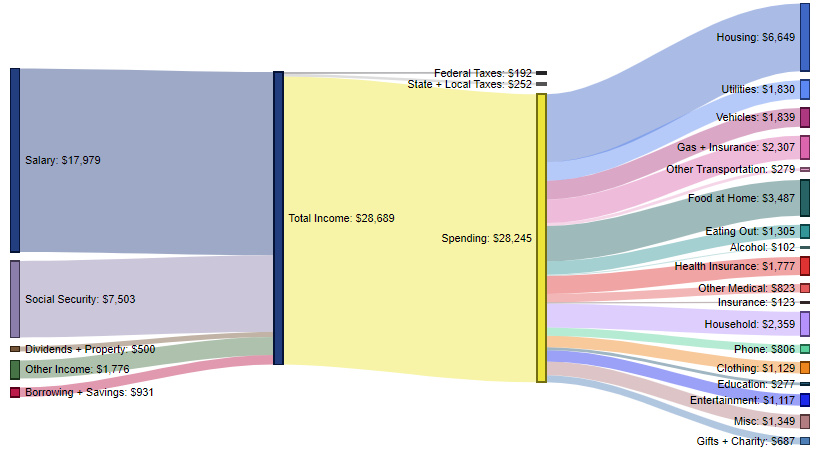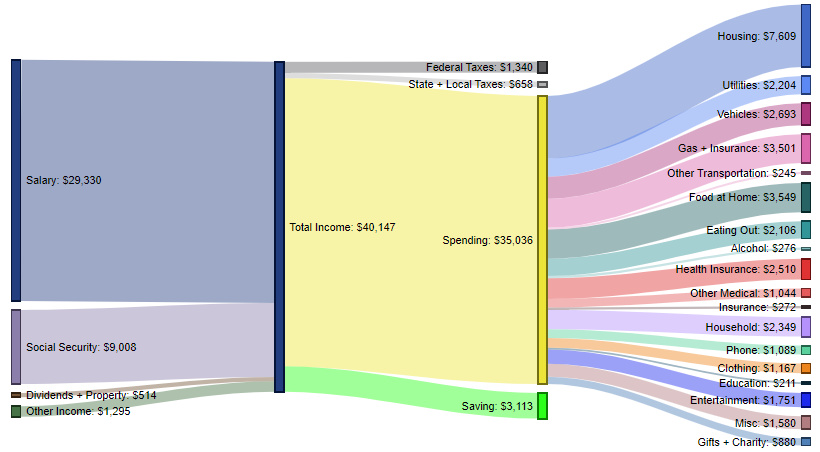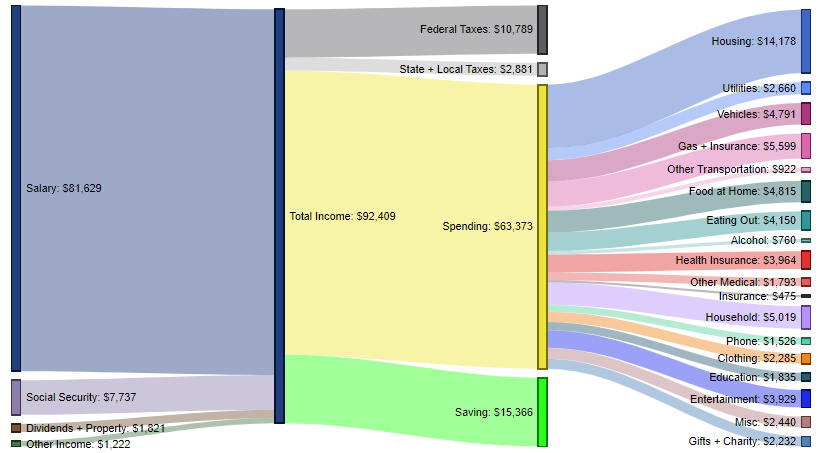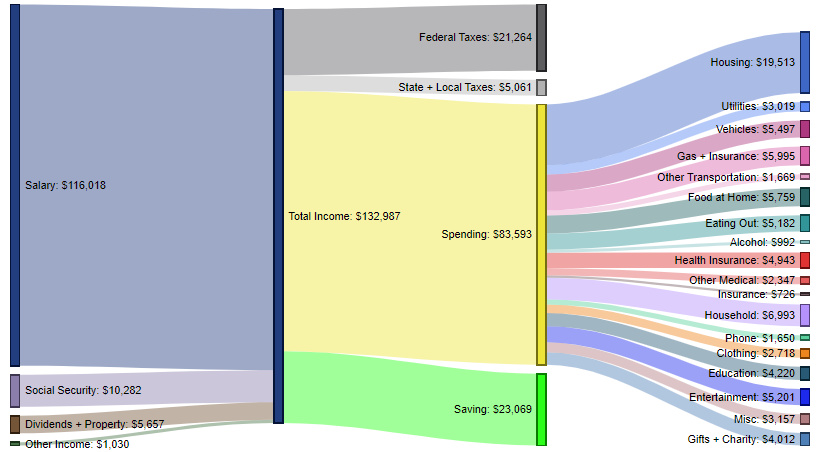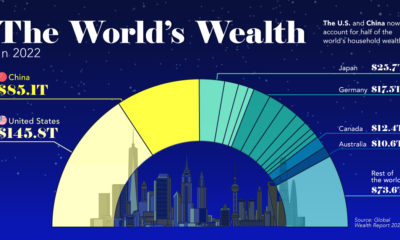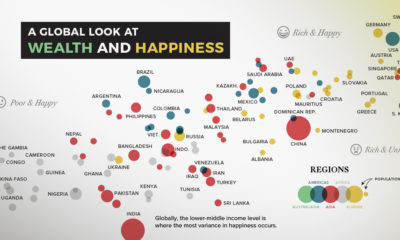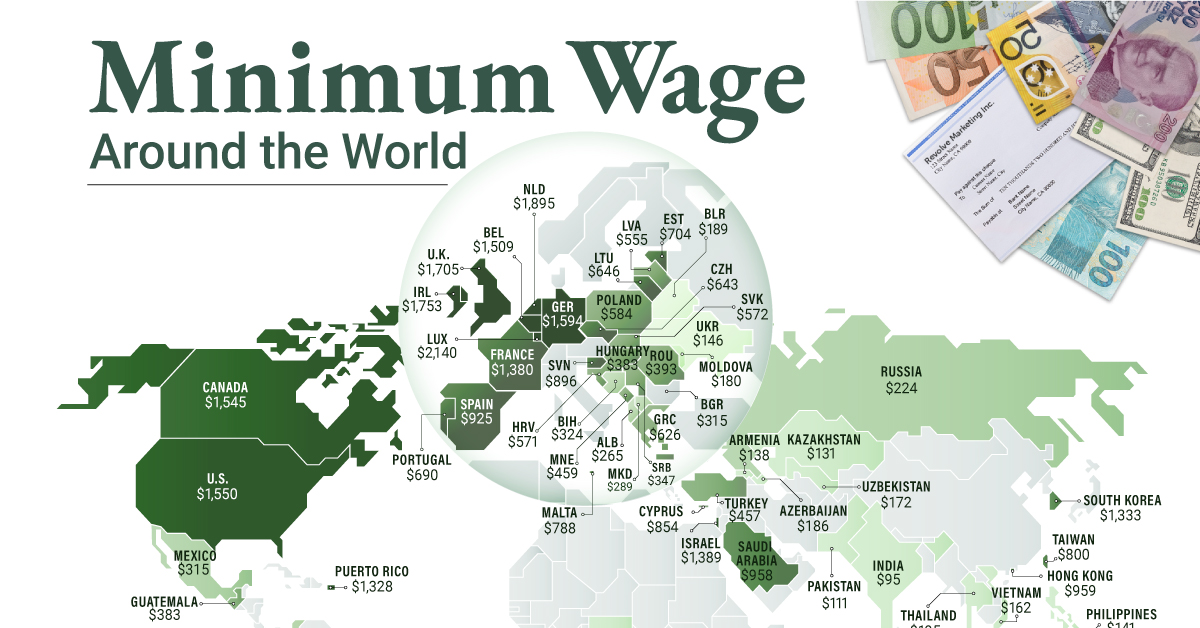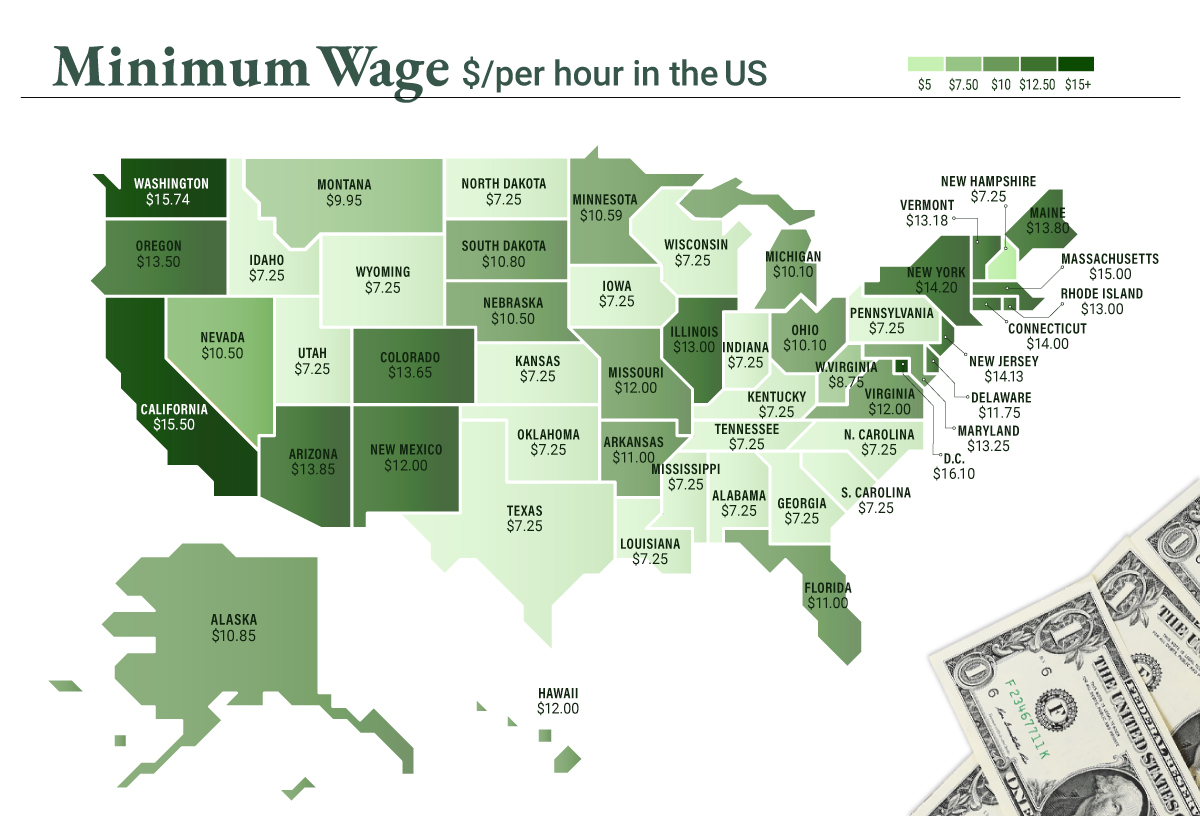Today’s post follows a similar theme, and it visualizes differences based on education levels. Below, we’ll tackle the breakdowns of several educational groupings, ranging from high school dropouts to those in the highest education bracket, which is defined as having achieved a master’s, professional, or doctorate degree.
Income and Spending, by Education
The data visualizations in today’s post come to us from Engaging Data and they use Sankey diagrams to display data from the Bureau of Labor Statistics (BLS) that shows income and expenditure differences between varying levels of education in America. The four charts below will show data from the following categories:
Less than High School Graduate – $28,245 in spending (98.5% of total income)
These contain an average of 2.2 people (0.7 income earners, 0.6 children, and 0.5 seniors) The average household in this category brings in $17,979 of salary income, as well as an additional $7,503 from social security programs. Almost all money (98.5%) is spent, and on average these households are actually pulling money from savings (or taking out loans) to make ends meet. The biggest expenditure categories include: housing (23.5%), foot at home (12.3%), household expenses (8.4%), and gas/insurance (8.2%).
High School Graduate – $35,036 in spending (87.3% of total income)
These contain an average of 2.3 people (1.0 income earners, 0.6 children, and 0.4 seniors) The average household here brings in $29,330 of salary, as well as $9,008 from social security. These households spend 87.3% of their income, while putting $3,113 (7.8%) away in savings each year. The biggest expenditure categories include housing (21.7% of spending), food at home (10.1%), gas/insurance (10.0%), and vehicles (7.7%).
Bachelor’s Degree – $63,373 in spending (68.6% of total income)
These contain an average of 2.5 people (1.5 income earners, 0.6 children, and 0.4 seniors) Households with at least one person with a Bachelor’s degree earn $81,629 per year in salary, as well as nearly $11,000 stemming from a combination of social security, dividends, property, and other income. Roughly 68.6% of income is spent, with 16.6% going to savings. Top expenditures include housing (22.4%), gas/insurance (8.8%), household expenses (7.9%), and food at home (7.6%).
Graduate Degree – $83,593 in spending (62.9% of total income)
These contain an average of 2.6 people (1.5 income earners, 0.6 children, and 0.4 seniors) Finally, in the most educated category available, the average amount of salary coming into households is $116,018, with roughly an additional $17,000 coming in from other sources such as social security, dividends, property, and other income. Here, 62.9% of income gets spent, and 17.3% gets put towards savings. The most significant expenditure categories are housing (23.3%), household expenses (8.4%), gas and insurance (7.2%), and food at home (6.9%).
A Changing Role for Education?
For now, there is a clear link between certain types of college degrees and higher salaries. However, as total student debt continues to hit record highs of $1.5 trillion and as more remote educational options proliferate online, it will be interesting to see how these charts are impacted in the coming years. By the year 2030, do you think education will still have the same strength of correlation with income levels? on To see how the minimum wage differs around the world, we’ve visualized data from Picodi, which includes values for 67 countries as of January 2023.
Monthly Minimum Wage, by Country
The following table includes all of the data used in this infographic. Each value represents the monthly minimum wage a full-time worker would receive in each country. Picodi states that these figures are net of taxes and have been converted to USD. Generally speaking, developed countries have a higher cost of living, and thus require a higher minimum wage. Two outliers in this dataset are Argentina and Turkey, which have increased their minimum wages by 100% or more from January 2022 levels. Turkey is suffering from an ongoing currency crisis, with the lira losing over 40% of its value in 2021. Prices of basic goods have increased considerably as the Turkish lira continues to plummet. In fact, a 2022 survey found that 70% of people in Turkey were struggling to pay for food. Argentina, South America’s second-biggest economy, is also suffering from very high inflation. In response, the country announced three minimum wage increases throughout 2022.
Minimum Wage in the U.S.
Within the U.S., minimum wage varies significantly by state. We’ve visualized each state’s basic minimum rate (hourly) using January 2023 data from the U.S. Department of Labor.
2023-03-17 Update: This map was updated to fix several incorrect values. We apologize for any confusion this may have caused. America’s federal minimum wage has remained unchanged since 2009 at $7.25 per hour. Each state is allowed to set their own minimum wage, as long as it’s higher than the federal minimum. In states that do not set their own minimum, the federal minimum applies. If we assume someone works 40 hours a week, the federal minimum wage of $7.25 translates to an annual figure of just $15,080 before taxes. California’s minimum wage of $15.50 translates to $32,240 before taxes. For further perspective, check out our 2022 infographic on the salary needed to buy a home across 50 U.S. cities.
